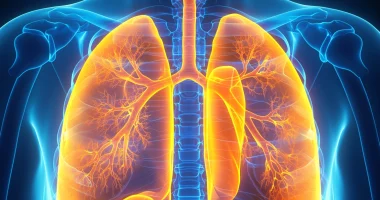Fecal incontinence
Definition
Fecal incontinence is an involuntary discharge of liquid or solid fecal masses and gases. Pathology has a varying degree of severity, from individual traces of fecal masses on underwear and clothes to uncontrolled excretion of the entire volume of feces contained in the rectum. Diagnosis includes functional studies (anal manometry, electromyography), visualizing instrumental methods (transrectal ultrasound, sigmoidoscopy). Conservative treatment involves diet correction, biofeedback, and exercises to strengthen the sphincter apparatus. Rarely, patients resort to surgical correction of fecal incontinence.
General information
Fecal incontinence is a common problem in women starting from the reproductive age. According to questionnaire data, periodic spontaneous emptying of the bowel with soft stools occurs in 3.9% of women and with regular stools – in 1.5%. In 20.5% of young and middle-aged women there is uncontrolled discharge of gases from the rectum. In older women, the prevalence of fecal incontinence is much higher, ranging from 7 to 23%. Incontinence is a significant medical problem; it disrupts the patient’s ability to work and social life.
Causes
The main etiologic factor of fecal incontinence in women is pelvic floor dysfunction (PFD), which occurs after pregnancy and childbirth. The likelihood of developing stool disorder is increased in women who have given birth multiple times and patients who have had prolonged or complicated labor. The risk of incontinence increases with vaginal prolapse and rectocele formation due to muscular dysfunction.
Other etiologic factors of fecal incontinence in women:
- Diarrhea. Diarrhea is the most common cause of incontinence, which occurs when the sphincter apparatus is functioning normally. Incontinence is associated with increased peristalsis and changes in the consistency of fecal masses. After eliminating the etiologic factor of diarrhea, unpleasant symptoms disappear without a trace.
- Intestinal pathology. Chronic proctologic diseases (hemorrhoids, proctitis) change the storage capacity of the rectum and lead to discoordination of the sphincter apparatus. The probability of fecal incontinence increases with ulcerative colitis, Crohn’s disease, and irritable bowel syndrome.
- Injury to the anal sphincter. In women, such injuries are most often caused by the birth of a large fetus or delivery of a clinically narrow pelvis requiring an episiotomy. Serious trauma to the anus muscles is seen with perineal rupture during childbirth. Proctologic surgery is a less common cause.
- Neuropathies. Fecal incontinence is possible with damage to peripheral nerve fibers that control the activity of anal sphincters. Neuropathies are characteristic of women with diabetes mellitus, CNS lesions – stroke, herniated discs, and multiple sclerosis.
- Dementia. In elderly and senile women, symptoms of fecal incontinence are common in Alzheimer’s disease and dyscirculatory encephalopathy. Incontinence becomes a constant problem, combined with uncontrolled urination.
Classification
In clinical practice, the systematization of incontinence by severity is essential, which is taken into account when making a diagnosis and choosing treatment tactics:
- In the first degree, a woman is unable to retain intestinal gas, while there are no problems with defecation.
- The second degree is characterized by gas and liquid stool incontinence.
- The third degree is accompanied by incontinence of gases, liquid, and solid feces.
There are two variants of fecal incontinence in women:
- Imperative incontinence. It is noted against the background of sharp, painful urges to defecate, which the patient cannot restrain. Emptying of the bowel occurs before the patient has time to go to the toilet.
- Passive fecal incontinence. It is observed in the absence of urges and is often caused by damage to the internal anal sphincter. Passive incontinence is more common in chronic proctologic diseases.
Symptoms
Patients describe signs of fecal incontinence of varying degrees, from traces of feces on underwear to excretion of 50-150 ml of feces. Usually, incontinence occurs without urges to defecate; the woman learns about the problem by the characteristic discomfort and unpleasant odor. There are also complaints of spontaneous gas discharge with a loud sound.
Most patients associate the onset of symptoms with childbirth. Incontinence mostly starts in the first days of the postpartum period; less often, it occurs months or even years after the child’s birth. The frequency of symptoms varies from 1-2 times a month to daily incontinence. The consumption of fatty foods, flour products, and dairy products often provokes the aggravation of incontinence. For some women, stress becomes a trigger factor.
Clinical signs of incontinence worsen the quality of daily life. To eliminate unpleasant symptoms, women are forced to wear large sanitary pads and take a change of underwear and spare clothes with them. Because of the fear that spontaneous fecal discharge will occur in a public place, patients sharply limit contact with people and shut themselves in. Most women avoid intimacy.
Diagnosis
The first stage of diagnosis is the examination of the perineum and perianal area with a finger rectal examination. The examination is carried out on a gynecological chair. In this case, a coloproctologist detects scar deformities, signs of proctitis, and hemorrhoidal nodes. Then, an instrumental diagnosis is prescribed:
- Anal manometry. The study reveals the insufficient force of contraction of the anal sphincter, the opening of the anus with a relatively small pressure, and the filling of the rectum. Profilometry is performed to measure the pressure gradient in different parts of the anal canal.
- Sigmoidoscopy. Visual inspection in women often reveals signs of rectal inflammation: swelling and hyperemia of the walls, increased vascular pattern, and mucous or purulent discharge. If colon pathology is suspected, colonoscopy is indicated.
- Electromyography of the anal sphincter. Electromyography evaluates the background and voluntary electrical activity of the muscles of the anus. Electromyography results determine discoordination of nervous regulation of bowel emptying, polyneuropathy.
- Transrectal ultrasound. A painless and safe study with a cavity sensor is carried out to assess the state of the intestinal wall, sphincter muscles, and other organs of the small pelvis of a woman. If there are signs of disorder, a standard or vaginal ultrasound is additionally performed.
Treatment of fecal incontinence
Drug therapy
Therapeutic measures begin with the prescription of a special diet to correct the consistency and volume of stools. Increase the amount of vegetable fiber, whole-grain bakery products, and lean meat in the daily diet. Drug therapy includes:
- Antidiarrheal drugs. Means for inhibiting motility are prescribed for inflammatory bowel diseases. They slow down peristalsis and increase fluid absorption, so the feces are shaped, and defecation is less frequent.
- Sedative medications. Eliminate the psychological causes of incontinence and relieve anxiety and nervousness. Taking sedatives can reduce the frequency of episodes of fecal incontinence.
Non-medicament treatment
Women are recommended special exercises to strengthen the pelvic floor muscles and general sports to increase the tone of the anterior abdominal wall. Biofeedback (biofeedback) is a promising therapy.
The technique is aimed at normalizing the contraction of the muscular apparatus of the anus and the formation of the correct defecation reflex. Biofeedback involves stimulation of the anus musculature with an air balloon under the control of an electromyographic sensor. After a course of 10-15 sessions, the ability to control the act of defecation increases, the strength of anal sphincter contraction increases.
In fecal incontinence of a mild degree of organic nature, if the defect of the muscular apparatus does not exceed ¼ of the circumference, electrical stimulation of the anal sphincter and perineal muscles is effective. For the treatment of functional incontinence, methods of tibial neuromodulation or sacral stimulation are used, which increase the neuro-reflex activity of the anus and rectum.
Surgical treatment
The indication for surgical intervention is incontinence of 2-3 degrees accompanied by a sphincter defect of more than ¼ of its circumference. Surgical methods are also used when incontinence cannot be cured conservatively. Colorectal surgeons perform various types of plastic interventions, such as sphincteroplasty and sphincterolevatoroplasty.
All these treatment options are available in more than 90 hospitals worldwide (https://doctor.global/results/diseases/fecal-incontinence). For example, Sacral nerve stimulation can be performed in following countries for an approximate price of:
United States – $30.5 K in 3 clinics
Germany – $45.7 K in 8 clinics
Israel – $52.4 K in 1 clinic.
Prognosis and prevention
Conservative measures can reduce episodes of incontinence in most women. Long-term prognosis depends on the cause of fecal incontinence and its severity. Primary pathology prevention includes careful labor management, prevention of birth traumatism, and timely selection of pregnant women for delivery by cesarean section. It is also necessary to detect and treat gastroenterological diseases in a timely manner.

